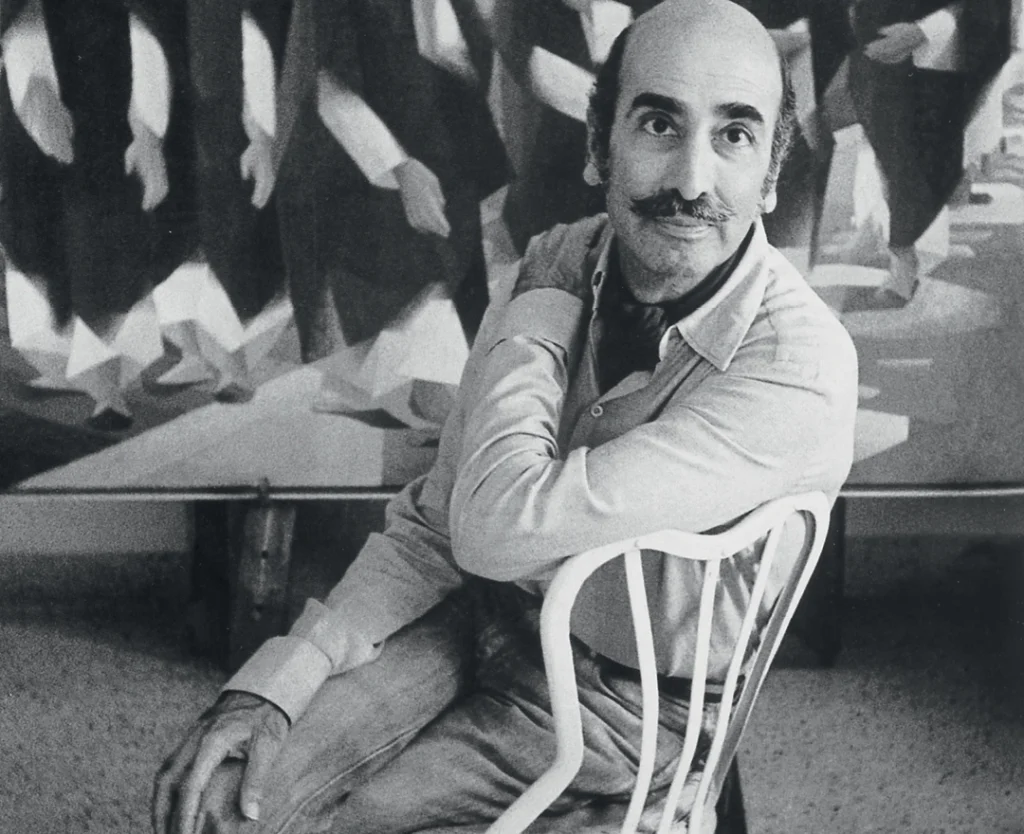A gentlemanly artist with a Dali-esque moustache and an elegant sartorial taste befitting his aristocratic lineage, Jehangir Sabavala was one of India’s most accomplished painters of the 20th century. Born on 23rd August 1922 in the heydays of Indian nationalism, Jehangir belonged to an affluent Parsi and Zoroastrian family, whose sympathies rested with the British Raj. Later his extended education in Europe – Sabavala after earning a Fine Arts Diploma from Mumbai’s Sir J.J. School of Art in 1944 went to Europe and studied in the Heatherley School of Art, London from 1945 to 1947, in Academia Andre Lhote, Paris in 1948 to 51, the Académie Julian from 1953 to 54 and finally at the Académie de la Grande Chaumiere in 1957 – were to raise banal suspicions about his authenticity as a true ‘Indian artist.’ The claim received undue attention due to his temperament as a solitary artist who distanced himself from any kind of groupism.
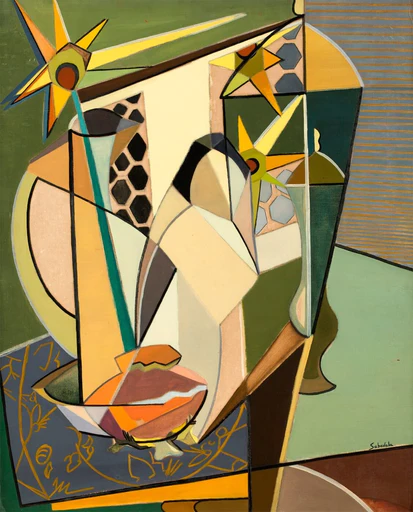 Objects Composed. 1955. Courtesy of Tallenge.
Objects Composed. 1955. Courtesy of Tallenge.
Working primarily in the medium of oil, Sabavala’s solid training in prominent schools of European art like academic, cubist, impressionistic and expressionistic along with the Asian influences of Japanese and Indian art have defined his artistic practice. His earliest years display a Cubist preoccupation given his tutelage under the important Cubist Andre Lhote. Objects Composed is a work from that period which depicts his interest in rendering reality through the Cubist lens using bold, sharp, explicit lines. However, by the early 60s Sabavala slowly departed from the classic Synthetic Cubism of Lhote and adapted Cubist possibilities to the challenges of the India he had returned to in the 50s.
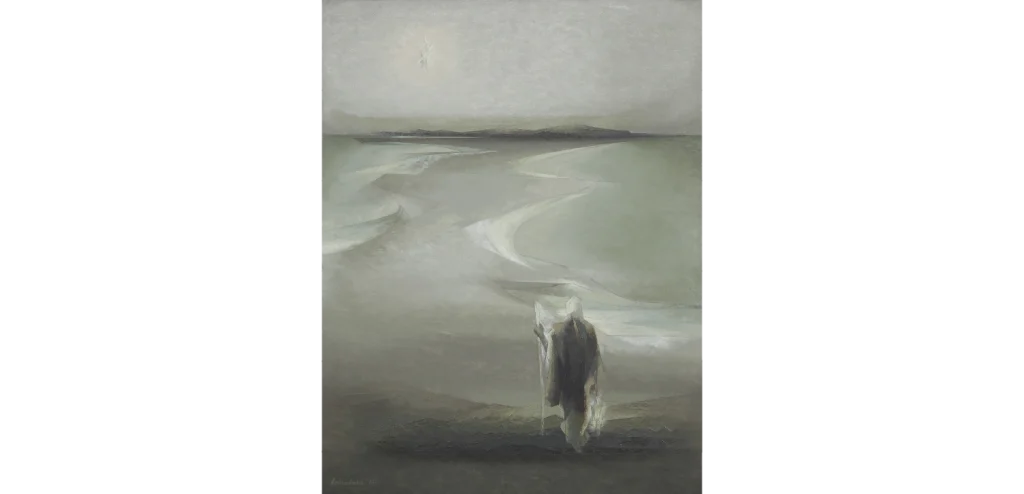 The Star that Beckons, 1968. Oil on canvas. Courtesy of Saffronart.
The Star that Beckons, 1968. Oil on canvas. Courtesy of Saffronart.
The 60s saw him reinvent himself as a painter, transforming his earlier sharpness into softer, intangible structures, fading into strokes of the brush that seek what is absent. As a commentator notes, “His use of colours changed from vivid to austere; the faces he painted evaded the certitude of identity; and he started playing with light – developing an interest in its source, direction and eventually, its enigmatic outcome on the canvas.” In doing this he developed his famed style which was an amalgamation of Academic, Impressionist, and Cubist styles. The effects of this transformation were most distinctly seen in a subject which was very dear to him and for which he has garnered much acclaim – landscape paintings.
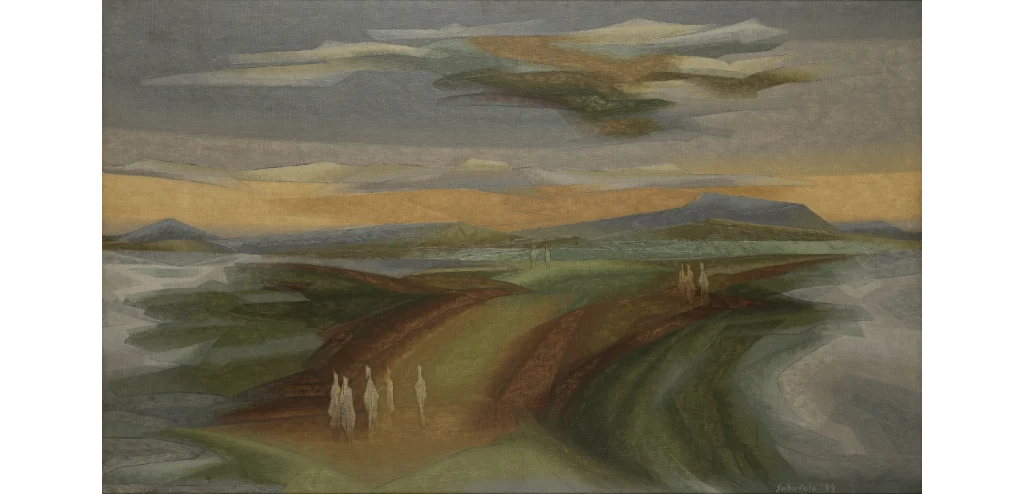 The Green Cape, 1974. Oil on canvas. Courtesy of Saffronart.
The Green Cape, 1974. Oil on canvas. Courtesy of Saffronart.
The Green Cape enchants the viewer with its expansive and panoramic view of India’s western coastline. The eminent art critic and biographer of Sabavala, Ranjit Hoskote writes eloquently, “At the level of immediate sensation, we are struck by the obvious physical beauty of the painting as a product, process, and parallel reality. And as we enter Sabavala’s spaces, with trepidation, to inhabit them, we apprehend their disquieting tranquillity; the paradox underscores the artist’s uncertainty about his place in the universe, his nostalgia for the infinite.”
Jehangir was an unbelievably meticulous painter who prioritised perfection over anything else. His wasn’t a sensibility of spontaneity. Each painting went through the rigorous procedures of thinking, numerous preparatory sketches and drawings marked intricately with numbers corresponding to notes on colour gradations and tonal values. He was able to distinguish with impeccable precision between different colours and it is this knowledge that he brings to the canvas that makes The Green Cape and his other works a transcendental experience.
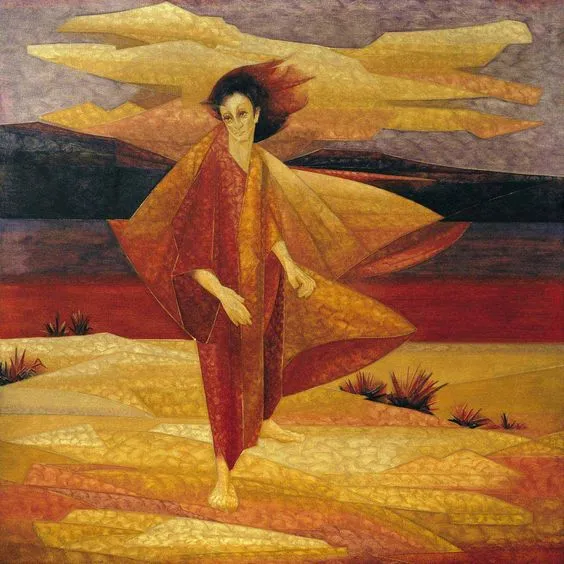 The Stranger I. 1990. Serigraph. Courtesy of The Serigraph Studio.
The Stranger I. 1990. Serigraph. Courtesy of The Serigraph Studio.
As an individual, Jehangir preferred solitude, an attribute that finds expression throughout his oeuvre. He was very interested in the writings of French philosophers, especially Albert Camus, who explored notions of existential estrangement. In many of his paintings, figures – solitary or otherwise – wander aimlessly across vast landscapes or chart territories that belong to a different world. One such example is his painting The Stranger I from 1990. A work of sublime beauty, it reeks of paradoxes. For instance, on getting closer to the painting one notices units with clear boundaries and edges reminiscent of his Cubist lineage and yet somehow as a whole it exudes a fluidity of form and landscape that is simply divine and mesmerizing.
The lonely figure in the middle – whose genealogy Hoskote traces back to Botticelli’s Venus arising from the ocean, Gothic and Renaissance interpretations of Christ’s Resurrection as well as the “Bengal School’s dream-like evocations of the Bodhisattvas of Ajanta” – exhibits the radiance and mystery of a figure who has forsaken a prior world and incarnated again. He is a visitant with no commandments to proclaim.
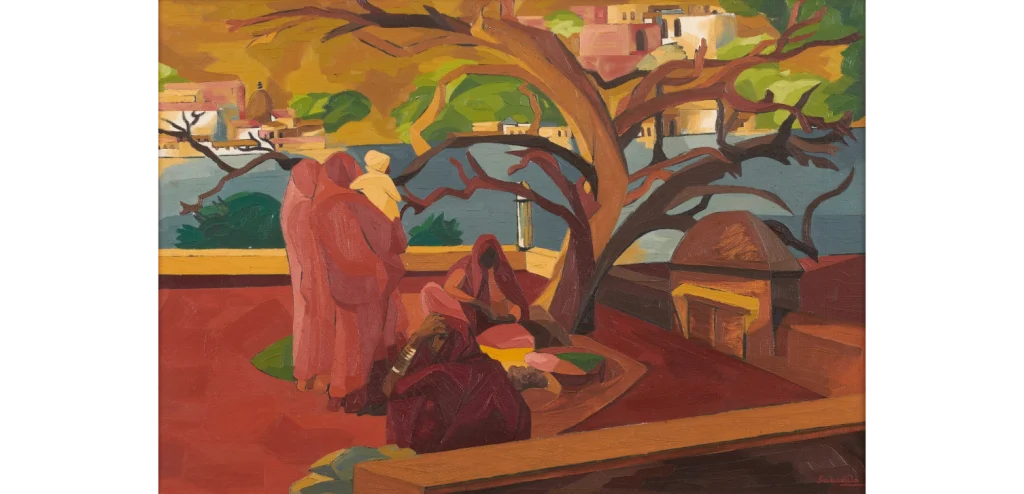 A Blue Lake, A Leafless Tree. Oil on canvas. Courtesy of Saffronart.
A Blue Lake, A Leafless Tree. Oil on canvas. Courtesy of Saffronart.
Sabavala’s work was often derided as ‘escapist’ by critics. But his admirers argue that the charge of escapism is based on the banal wisdom that art should always serve some prior ideological agenda that is geared towards social reform or realism. However, his commitment to the society and this nation can be gauged, firstly, through his and his family’s contribution in creating the only truly art exhibition space in Bombay, the Jehangir Art Gallery as well as the Cowasji Jehangir Hall where the Bombay branch of the National Gallery of Modern Art is housed. Secondly, Sabavala has played an instrumental role in creating avenues for young artists and mentored, among others, Mumbai writers and poets such as Ranjit Hoskote, Jerry Pinto, and Arundhathi Subramaniam.
Jehangir Sabavala’s artworld with its translucent seas, wispy clouds, and human figures lost in reverie transports us to a world that reverberates with, what Hoskote has tenderly called, ‘the ache of the sublime.’ In a world that is increasingly imbuing art with instrumentalism, Sabavala loiters like his stranger, in the quest for something else, that is to be found here or maybe somewhere else.
References
- Scroll.in: i this an exhibition on Jehangir Sabavala an archive or an essay
- architectural digest: Mumbai landscapes Jehangir Sabavalas new solo reveal luminous beauty
- jehangir-sabavala.com
- Economic times: Jehangir Sabavala colours of absence
- https://www.youtube.com/watch?v=XVefX5qsIrk
- serigraphstudio: Jehangir Sabavala
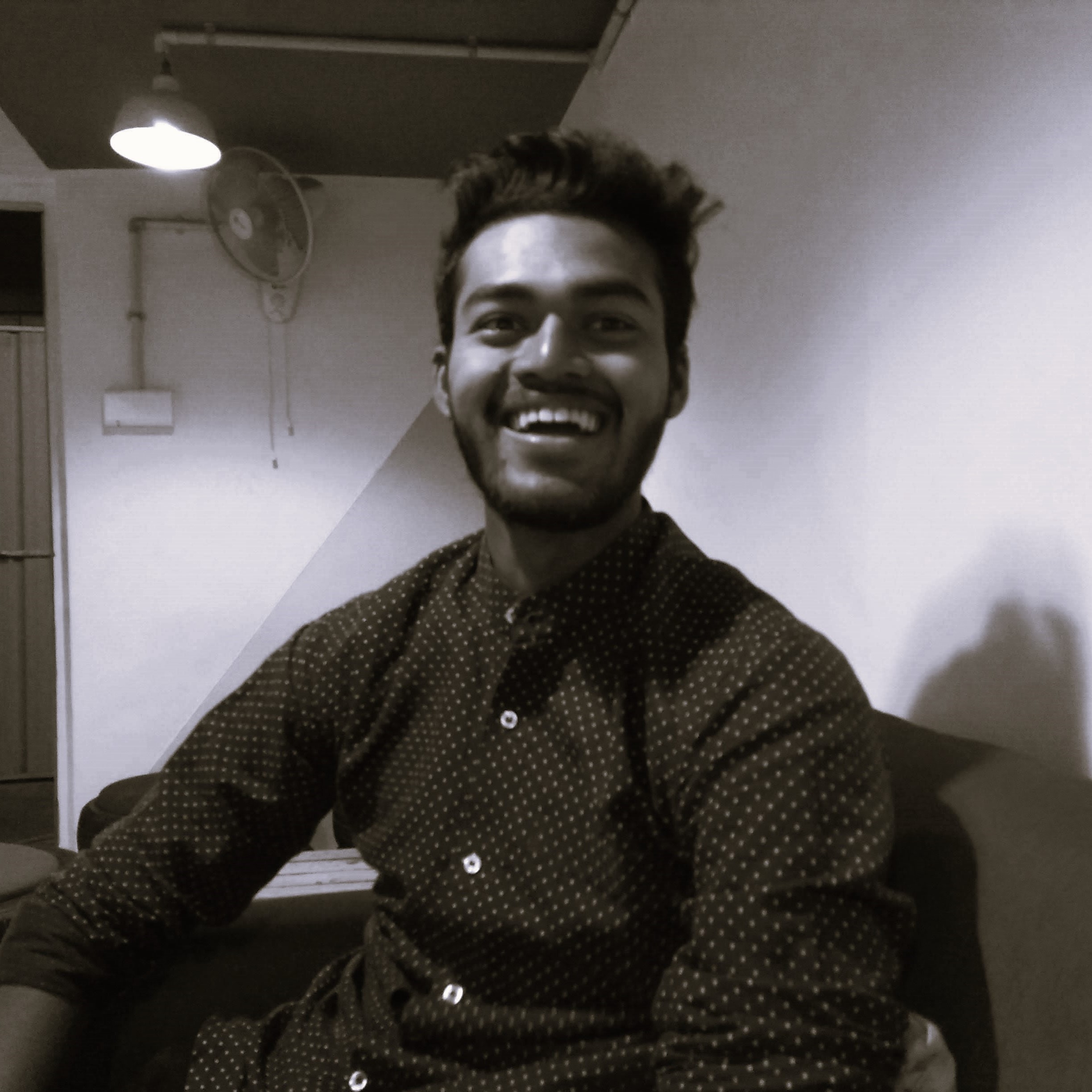
Contributor

